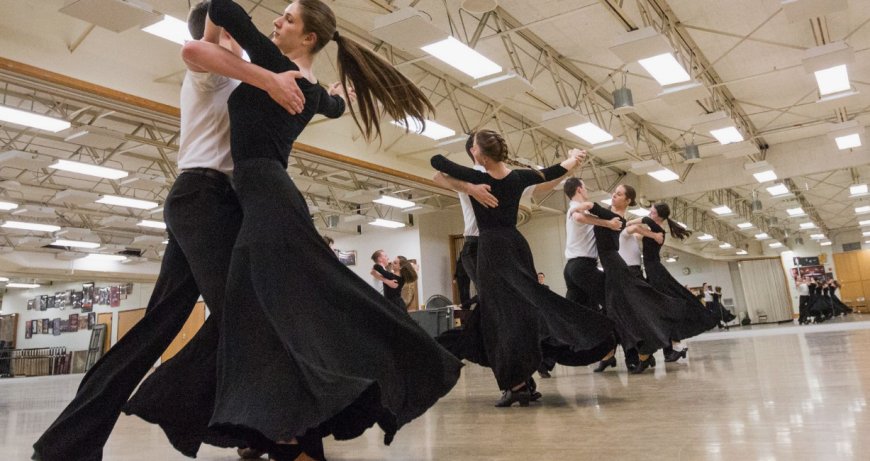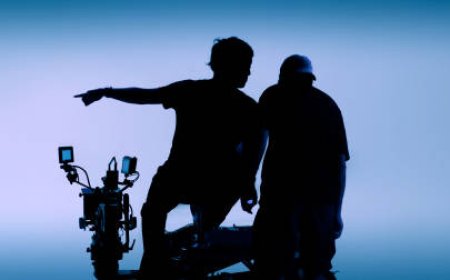The Elegance and Energy of Ballroom Dancing: A Journey Through Grace, Rhythm, and Connection

Ballroom dancing is more than just a form of entertainment or exerciseit is an elegant art form, a sport, and a social tradition all rolled into one. With roots tracing back centuries, ballroom dancing continues to captivate dancers and audiences alike with its unique blend of rhythm, poise, and emotional expression. Whether youre a complete beginner or someone who dreams of stepping onto a competition floor, exploring ballroom dancing can be a life-changing experience.
In this article, well explore the rich history of ballroom dancing, its major styles, benefits, and how you can get started.
What is Ballroom Dancing?
Ballroom dancing refers to a collection of partner dances enjoyed socially and competitively around the world. Traditionally performed in ballroomshence the namethese dances are known for their grace, structure, and connection between partners. The beauty of ballroom dancing lies in its precision and the seamless unity between two people moving as one.
Over time, ballroom dancing has evolved into two primary styles:
- International Style Widely used in competitions worldwide, this includes two categories:
- Standard (or "Modern") dances: Waltz, Tango, Viennese Waltz, Foxtrot, and Quickstep.
- Latin dances: Cha-Cha, Samba, Rumba, Paso Doble, and Jive.
- Smooth dances: American Waltz, Tango, Foxtrot, and Viennese Waltz.
- Rhythm dances: Cha-Cha, Rumba, Swing, Bolero, and Mambo.
Each dance has its own unique timing, posture, and energy, but all require a strong connection and coordination between partners.
The History of Ballroom Dancing
Ballroom dancing has a rich and diverse history that reflects cultural evolution and social change. It began in the royal courts of Europe during the 16th century. Dances like the Minuet were reserved for the upper class and were often used to display refinement and social status.
By the 19th century, dances such as the Waltz became more widespread, breaking traditional norms with close partner holds. Later, the 20th century saw the explosion of Latin influences, jazz rhythms, and swing, all of which helped diversify ballroom dance styles. Competitive ballroom dancingor Dancesportemerged in the early 1900s and has since grown into a global phenomenon.
Popular Ballroom Dance Styles Explained
Lets dive into a few of the most popular ballroom dances that continue to capture hearts around the world.
1. Waltz
Often called the "mother of all ballroom dances," the Waltz is known for its sweeping, graceful movements and 3/4 timing. Partners glide across the floor in a flowing pattern, emphasizing rise and fall. It's romantic and timeless.
2. Tango
Originating from Argentina, the Tango is passionate and dramatic. It features staccato movements, sharp footwork, and close partner connection. The contrast between stillness and sharp actions makes it captivating to watch.
3. Foxtrot
The Foxtrot is a smooth and elegant dance characterized by long, continuous flowing movements. Its danced to jazz or big band music and is perfect for those who love grace with a bit of swagger.
4. Cha-Cha
The Cha-Cha is a playful, flirtatious Latin dance with sharp footwork and fast-paced rhythm. Its distinctive cha-cha-cha beat makes it both fun and energetic.
5. Rumba
Known as the "dance of love," the Rumba is slow, sensual, and expressive. With its hip movements and romantic styling, it allows for deep emotional storytelling through dance.
Benefits of Ballroom Dancing
Ballroom dancing offers far more than just a way to pass time or entertain. Here are some of its core benefits:
1. Physical Fitness
Dancing improves cardiovascular health, muscle tone, posture, balance, and flexibility. It provides a low-impact workout that engages the entire body.
2. Mental Health
Learning choreography and coordinating with a partner boosts cognitive function, memory, and concentration. It also helps reduce stress and elevate mood through endorphin release.
3. Social Connection
Ballroom dancing is inherently social. Whether in classes, dance socials, or competitions, its a great way to meet new people and develop communication and teamwork skills.
4. Self-Confidence
As dancers progress, they gain confidence in their body movement and self-expression. Performing or even just dancing in front of others can be a transformative experience.
5. Cultural Appreciation
Ballroom dancing spans cultures and traditions. Learning dances from different regions can foster a deeper appreciation for global diversity and artistry.
How to Get Started with Ballroom Dancing
Getting into ballroom dancing is easier than you might think. Here are some steps to guide you:
1. Find a Local Dance Studio
Look for a ballroom dance studio or community center offering beginner classes. Many offer first-time discounts or free trial lessons.
2. Choose Your Style
Do you prefer the elegance of the Waltz or the energy of the Cha-Cha? Try different styles to see what resonates with you.
3. Get the Right Shoes
Investing in a pair of ballroom dance shoes can make a big difference. These shoes offer better support and movement than street footwear.
4. Practice Consistently
Like any skill, ballroom dancing requires regular practice. Consider taking weekly lessons and supplementing them with at-home practice or dance socials.
5. Be Patient
Progress takes time. Celebrate small victories, stay open to feedback, and most importantlyhave fun.
Ballroom Dancing in the Modern Era
Thanks to shows like Dancing with the Stars and Strictly Come Dancing, ballroom dancing has experienced a resurgence in popularity. Dance competitions are now broadcast internationally, inspiring people of all ages to take to the floor.
Technology has also played a role. From online tutorials to virtual classes, learning ballroom dancing is now more accessible than ever.
Moreover, ballroom dancing is becoming increasingly inclusive, welcoming people of all genders, ages, and abilities. Same-sex and gender-neutral dance categories are gaining recognition, reflecting the evolving spirit of the dance world.
Final Thoughts
Ballroom dancing is a magical blend of movement, music, and connection. It teaches discipline, expresses emotion, and celebrates human connection through every step. Whether youre seeking a new hobby, a way to get fit, or simply want to experience the beauty of movement, ballroom dancing opens the door to a world full of rhythm, elegance, and joy.



































